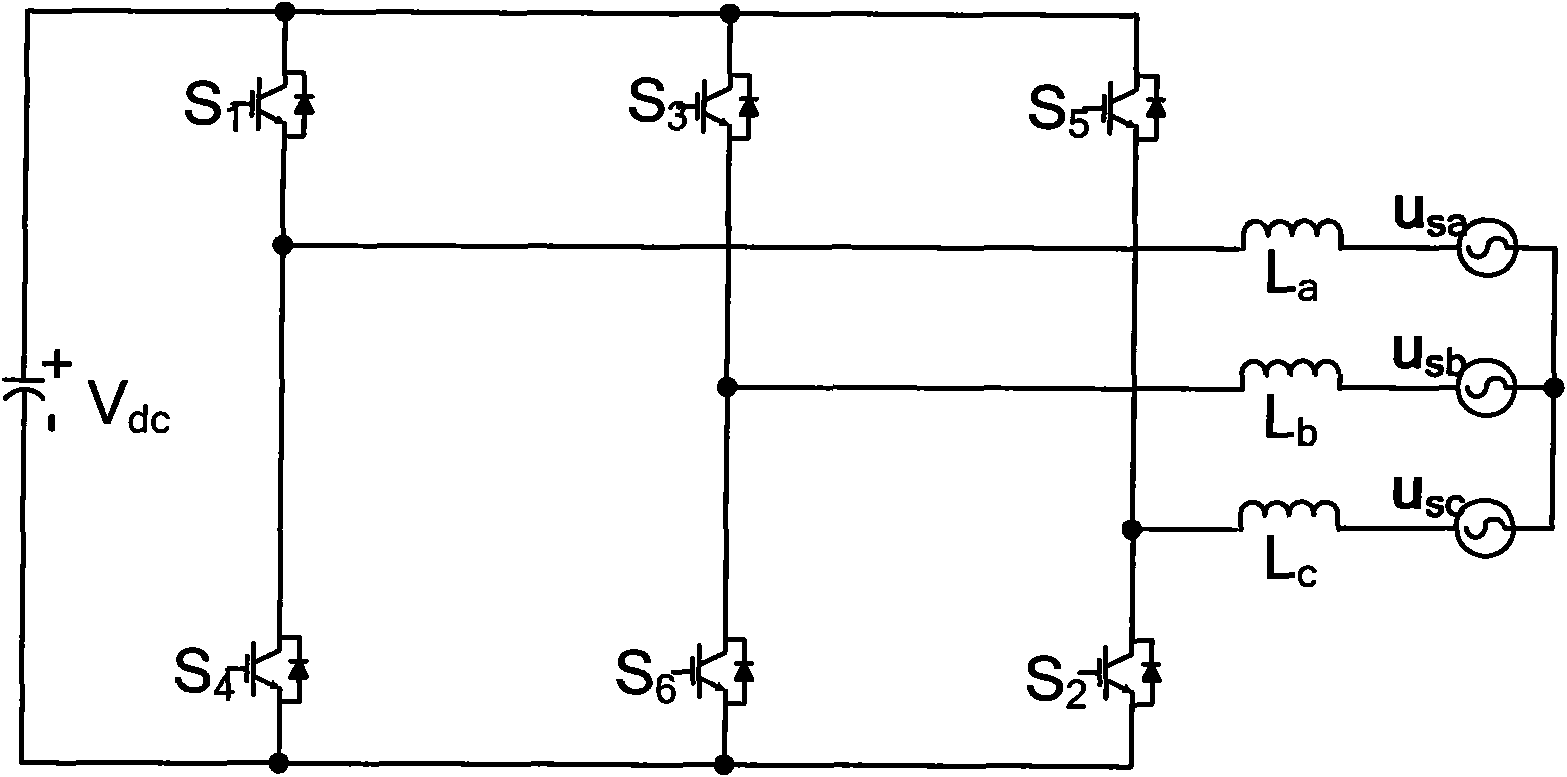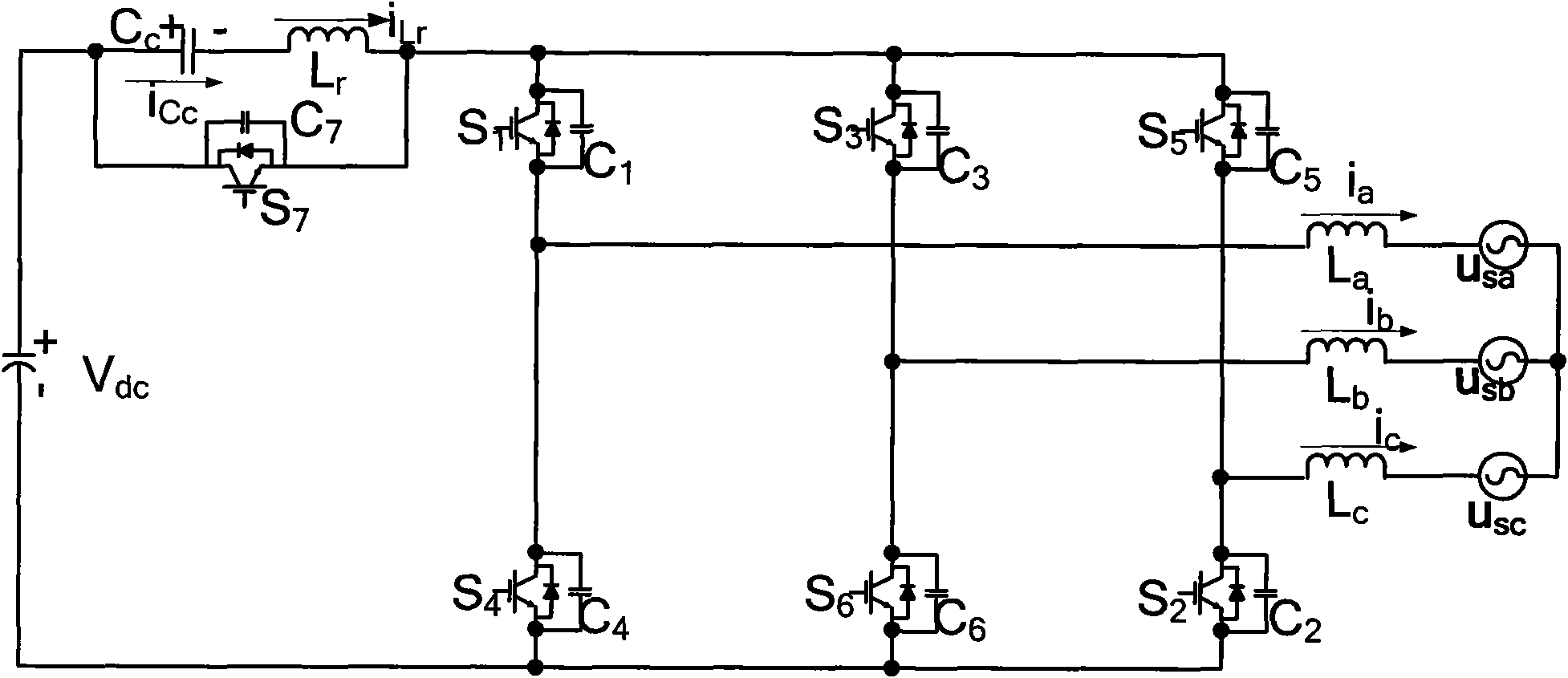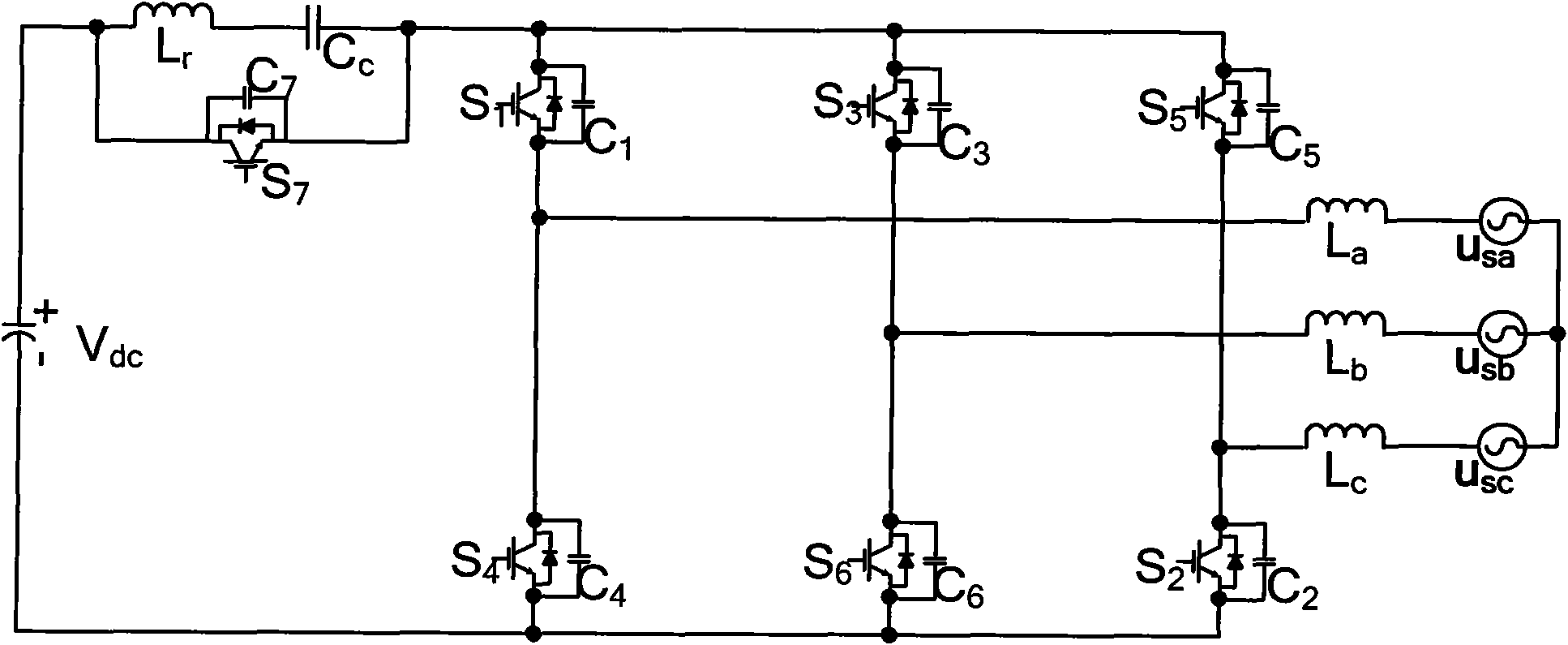Minimum-voltage, active-clamp and three-phase grid-connected inverter
An inverter and voltage technology, which is applied in electrical components, conversion devices for converting AC power input to DC power output, and output power, etc. The effect of improving power density, improving circuit efficiency, and increasing operating frequency
- Summary
- Abstract
- Description
- Claims
- Application Information
AI Technical Summary
Problems solved by technology
Method used
Image
Examples
Embodiment Construction
[0015] refer to figure 2 , the minimum voltage active clamp three-phase grid-connected inverter of the present invention includes the power supply V on the DC side of the inverter dc , consisting of six fully controlled main switches S with anti-parallel diodes 1 ~S 6 The three-phase bridge arms formed are respectively connected to the output filter inductance L between the midpoint of each phase bridge arm and the AC grid a ~ L c , which is characterized by the six main switches S of the three-phase bridge arm 1 ~S 6 Parallel capacitor C 1 ~C 6 , power supply V on the DC side of the inverter dc Auxiliary switch S with anti-parallel diode is connected between DC bus and three-phase bridge arm 7 , auxiliary switch S 7 Parallel capacitance across both ends of the C 7 , and at the auxiliary switch S 7 Connected across both ends by the resonant inductor L r with clamp capacitor C c series resonant branch.
[0016] figure 2 In the specific example shown, the auxili...
PUM
 Login to View More
Login to View More Abstract
Description
Claims
Application Information
 Login to View More
Login to View More - R&D
- Intellectual Property
- Life Sciences
- Materials
- Tech Scout
- Unparalleled Data Quality
- Higher Quality Content
- 60% Fewer Hallucinations
Browse by: Latest US Patents, China's latest patents, Technical Efficacy Thesaurus, Application Domain, Technology Topic, Popular Technical Reports.
© 2025 PatSnap. All rights reserved.Legal|Privacy policy|Modern Slavery Act Transparency Statement|Sitemap|About US| Contact US: help@patsnap.com



